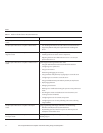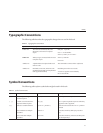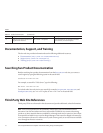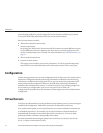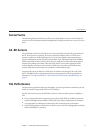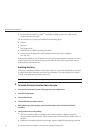
Performance and Monitoring Overview
Sun Java System Web Server (henceforth known as Web Server) is designed to meet the needs
of the most demanding, high-trac sites in the world. It can serve both static and dynamically
generated content. Web Server can also run in SSL mode, enabling the secure transfer of
information.
This guide helps you to dene your server workload and size a system to meet your
performance needs. Your environment is unique, however, so the impacts of the suggestions
provided here also depend on your specic environment. Ultimately you must rely on your own
judgement and observations to select the adjustments that are best for you.
This chapter provides a general discussion of server performance considerations, and more
specic information about monitoring server performance.
This chapter includes the following topics:
■
“Performance Issues” on page 19
■
“Conguration” on page 20
■
“Virtual Servers” on page 20
■
“Server Farms” on page 21
■
“64–Bit Servers” on page 21
■
“SSL Performance” on page 21
■
“Monitoring Server Performance” on page 22
Performance Issues
The rst step toward sizing your server is to determine your requirements. Performance means
dierent things to users than to webmasters. Users want fast response times (typically less than
100 milliseconds), high availability (no “connection refused” messages), and as much interface
control as possible. Webmasters and system administrators, on the other hand, want to see high
connection rates, high data throughput, and uptime approaching 100%. In addition, for virtual
1
CHAPTER 1
19




